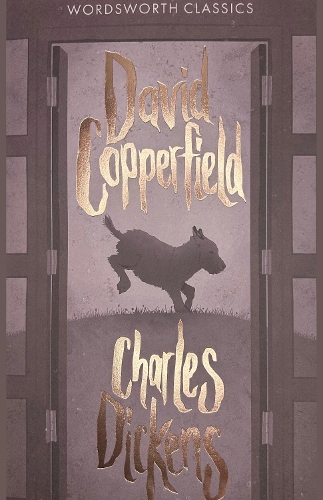
David Copperfield
(Paperback)
Available Formats
Paperback
Published: 1st May 2012
Paperback
Published: 16th July 2012
Hardback
Published: 25th June 2014
Paperback
Published: 5th May 1992
Paperback
Published: 15th March 1988
Paperback
Published: 1st July 2008
Paperback
Published: 7th February 2006
Paperback
Published: 1st May 2005
Hardback
Published: 13th September 2016
Hardback
Published: 3rd April 2017
Hardback, New edition
Published: 13th September 2019
Paperback
Published: 26th September 2012
Paperback
Published: 15th December 2000
Hardback
Published: 2nd December 1991
Hardback
Published: 5th June 2019
Hardback
Published: 25th June 2024
Paperback
Published: 3rd September 2019
Publishing Details
David Copperfield
By (Author) Charles Dickens
Introduction and notes by Dr Adrienne Gavin
Illustrated by Hablot K. Browne
Series edited by Dr Keith Carabine
Wordsworth Editions Ltd
Wordsworth Editions Ltd
5th May 1992
5th May 1992
United Kingdom
Classifications
General
Fiction
823.8
Runner-up for The BBC Big Read Top 100 2003
Physical Properties
Paperback
768
Width 129mm, Height 198mm, Spine 38mm
471g
Description
Dickens wrote of 'David Copperfield': "Of all my books I like this the best". Millions of readers in almost every language on earth have subsequently come to share the author's own enthusiasm for this greatly loved classic, possibly because of its autobiographical form. Following the life of David through many sufferings and great adversity, the reader will also find many light-hearted moments in the company of a host of English fiction's greatest stars including Mr Micawber, Traddles, Uriah Heep, Creakle, Betsy Trotwood, and the Peggoty family. Few readers, arriving at the end of 'David Copperfield', will not wish to echo Thackeray's famous praise, having read the first monthly part "Bravo Dickens". AUTHOR: Charles John Huffam Dickens FRSA (7 February 1812 9 June 1870), pen-name "Boz", was the most popular English novelist of the Victorian era and one of the most popular of all time. He created some of literature's most memorable characters. His novels and short stories have never gone out of print. A concern with what he saw as the pressing need for social reform is a theme that runs throughout his work. Much of his work first appeared in periodicals and magazines in serialised form, a favoured way of publishing fiction at the time. Dickens, unlike others who would complete entire novels before serial publication commenced, often wrote his in parts, in the order in which they were meant to appear. The practice lent his stories a particular rhythm, punctuated by one cliff-hanger after another to keep the public eager for the next instalment.
